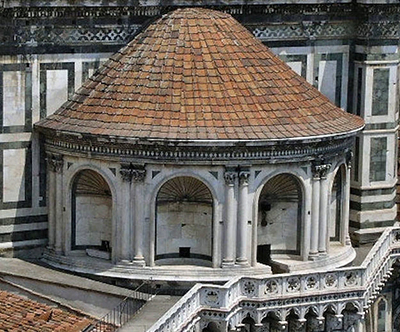The decision to add this additional piece to the existing Florence Cathedral was taken on the 27th of February, 1439 and naturally Filippo Brunelleschi was the first choice for this commission
Several years passed before much work was completed and it is likely that this period was used by the architect to produce several models of the final piece. He would have had several concerns over adding weight to the original construction and finding a way to ensure that everything remained stable for centuries to come.
Knowledge of architecture and physics had moved on significantly since the original building was constructed a century earlier, meaning isses with the construction that were not clear at the time were now staring Filippo Brunelleschi in the face as he planned to again develop the Cathedral onwards once more with this new exedrae.
To see the main photograph in this page belies the amount of complexity to plans, even once the initial problems had been ironed out. Even when the weight impact on the rest of the building had been overcome there were still considerations of drainage, access and also the final flourishes that were always important to any artist. For example, there were stylised shells within each niche-head that you may just be able to make out from the photo.
Every last detail was planned through design drawings and test models which remain a standard method of architectural design today. Filippo Brunelleschi put in a spiral staircase throughout the vertical profile of the exedrae in order to ensure full access to those maintaining the building. This project has taken a backseat when considering the highlights of Filippo Brunelleschi's career but, in truth, it represents one of the purest designs that he produced. Perhaps the smaller nature of this project compared to his Dome ensured less interference on his original ideas.




